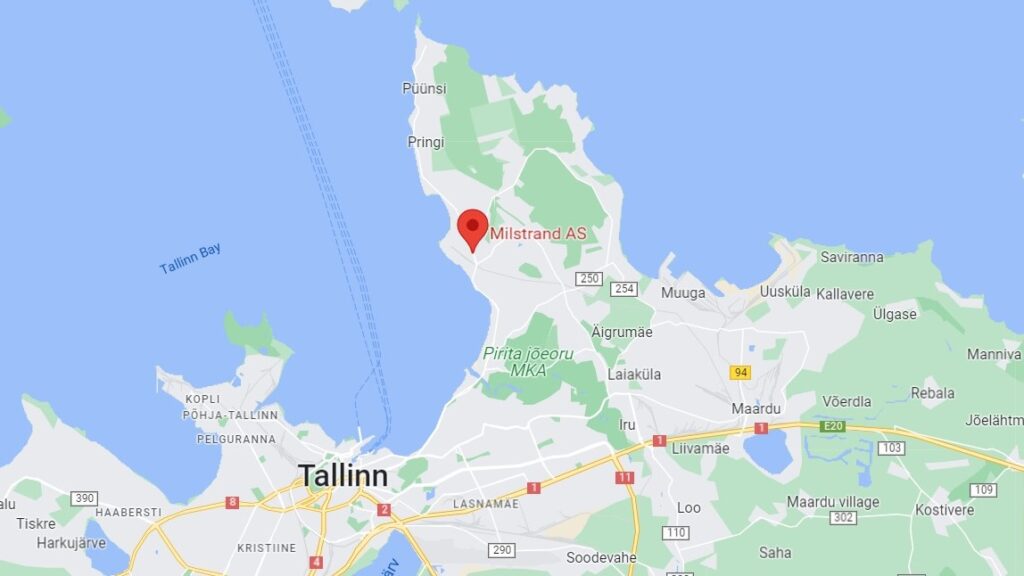Endel Siff, the chairman of Milstrand, an Estonian oil storage company, writes that the country should take advantage of his company’s underground oil storage facility that would ensure strategic conservation of fuel supplies during a blockade or kinetic attack – and even in the event of a nuclear strike.
Estonia, like its neighbouring Baltic countries, is reducing and removing its dependence on Russian gas in response to the war in Ukraine. The Estonian finance ministry recently confirmed its support to invest in a floating liquified natural gas terminal to be installed and made operational in Paldiski, a port town in northwestern Estonia, before the winter. This will get rid of Estonia’s reliance on Russian gas and funding the war machine in Ukraine.
While this secures one pillar of energy security, gaps still remain in Estonia’s plans to provide the continuity of supply. This was highlighted in a letter I sent to the Estonian ministry of defence that on 31 March was leaked to the Estonian press.
In the letter I stated that Estonia’s only underground fuel storage had been empty and remained so, reserved since November 2021 by an international trading company. The reservation can immediately be cancelled if the Estonian government or our allies express interest in utilising the storage for their own purposes.

Energy infrastructure among the primary targets during conflict
The underground oil storage facility in question is just 10 kilometres (six miles) northeast of Tallinn. During the Soviet occupation, the facility was a military secret, but it was privatised in the 1990s and is operated by Milstrand today. Consisting of three sets of 800-metre (2,625-foot) tunnels dug over 40 metres (131 feet) deep into blue clay the underground tanks alone are able to hold 51,000 cubic metres (13.5 million US gallons) of fuel.
Excavated in the 1970s by the Soviet Union for Cold War scenarios to ensure strategic conservation of fuel supplies in the event of a nuclear strike, the facility is in fact unique in the Baltics to my knowledge.
The lessons of Ukraine show that, in times of conflict, non-military sites on which national resilience depends are among the first targets. The primary targets among them are energy infrastructure (terminals, oil plants, pipelines) along with supporting facilities (communications, the government and, unfortunately in this case, hospitals).
Russia consistently targets oil depots in Ukraine. Similarly, the Ukrainian armed forces are attacking Russian fuel convoys and depots servicing the invading aggressors.
As the chairman of the supervisory board for Milstrand, I have sought to privately draw attention to the fact that our underground tunnels would provide effective protection against an air strike and thus be a strategic asset for resilience in times of conflict. Not only for Estonia, but for our Baltic neighbours and the NATO allies who have their forces stationed in our region.

An LNG terminal is only effective in peacetime
While Estonia is stopping relying on Russian natural gas, we should not overlook securing fuel supplies once they are on Estonian soil. An LNG terminal only performs its function effectively in peacetime. It’s not a leap of imagination that, to be prepared for the unthinkable, Estonia should assume its ground terminals, including any LNG sites, would be early targets as a new single point of failure.
A loss of these and vulnerable above ground storage would cause significant collateral damage and rapidly make Estonia dependent on fuel supplies from allies to keep the military and civil operations running. The NATO units stationed in Estonia, both national and from our allies, would also be impacted.
As an old-timer who lived through the Soviet occupation, I would sleep better at night knowing the fuel tanks were full, ready to supply anything from diesel generators at our hospitals to military jets and tanks.
Whether the Estonian government will take lessons from Ukraine or it is our allies who fill the underground tanks, doing so will support Europe in standing up to potential aggressors. Since them being built 50 years ago, Tallinn’s protected storage has not been a necessity and the worst fears of the Cold War were not realised. I sincerely hope its capabilities will never be tested.
The opinions in this article are those of the author.

